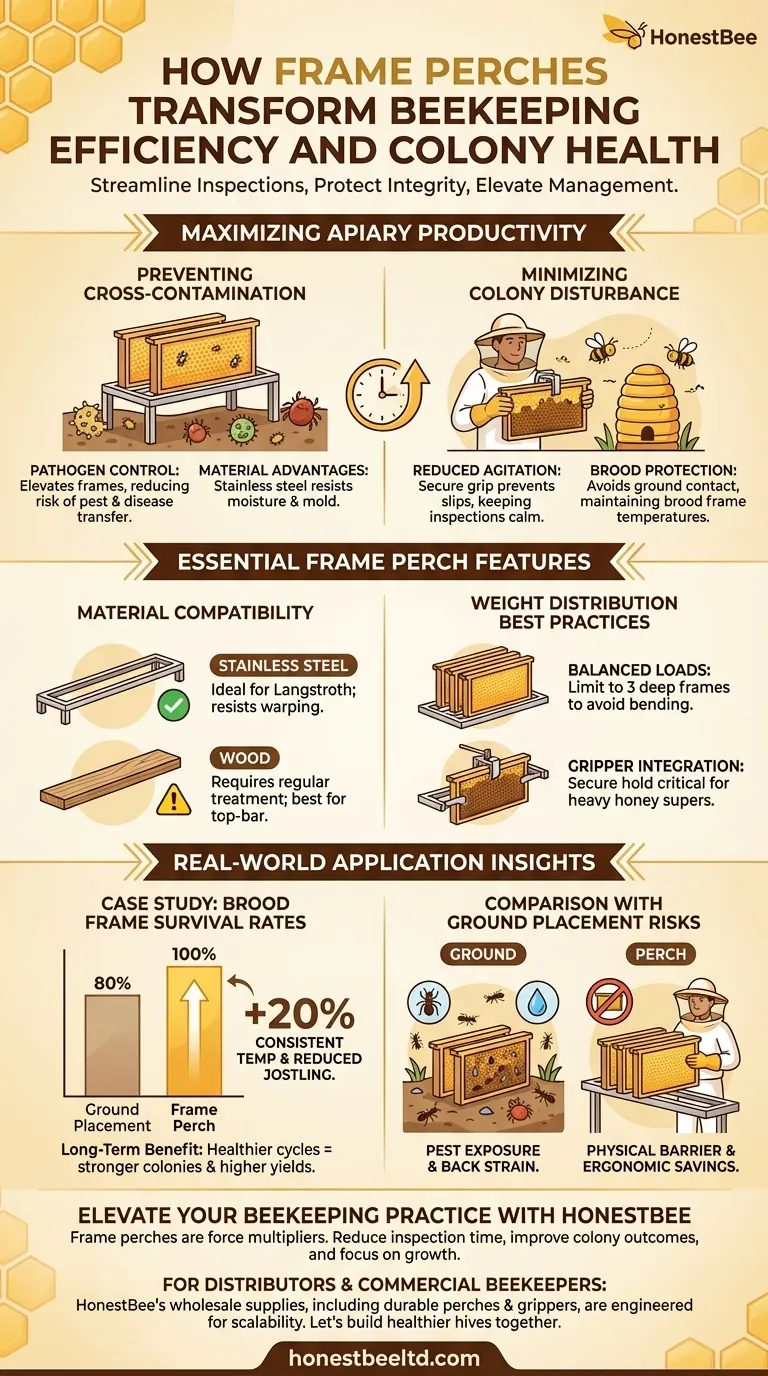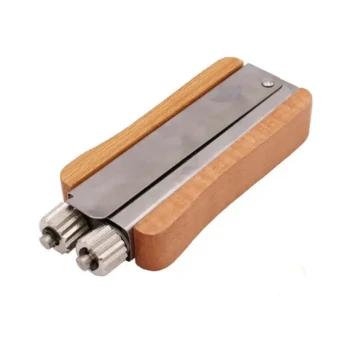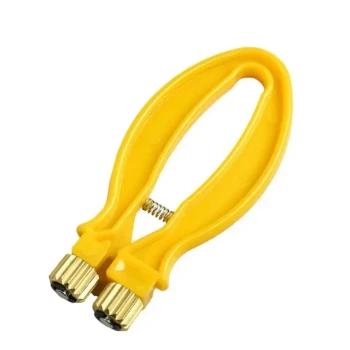Beekeepers know hive inspections are necessary but disruptive. Frame perches—often overlooked as simple tools—address this paradox by streamlining inspections while protecting colony integrity. Beyond holding frames, they prevent cross-contamination, reduce stress on bees, and improve brood survival rates. Let’s explore how these unassuming devices elevate apiary management.
Maximizing Apiary Productivity
Frame perches are productivity multipliers. By optimizing workflow during inspections, they help beekeepers evaluate more hives in less time while maintaining precision.
Preventing Cross-Contamination During Inspections
- Pathogen Control: Placing frames directly on the ground or hive lids risks transferring pests like varroa mites or spores of foulbrood. Perches keep frames elevated and isolated.
- Material Advantages: Stainless steel perches (standard in modern apiaries) resist moisture and mold, unlike wooden alternatives.
Minimizing Colony Disturbance
- Reduced Agitation: Bees interpret sudden vibrations (e.g., dropped frames) as threats. Perches with grippers—like those from HONESTBEE—prevent slips, keeping inspections calm.
- Brood Protection: Research shows avoiding ground contact maintains brood frame temperatures. Chilled brood larvae often fail to develop, costing colonies productivity.
Essential Frame Perch Features
Not all perches are equal. Selecting the right design hinges on material compatibility and ergonomics.
Material Compatibility with Hive Types
- Stainless steel: Ideal for Langstroth hives, these resist warping and fit standardized frames.
- Wood: Traditional but requires regular treatment to prevent rot. Best for top-bar hives where weight distribution differs.
Weight Distribution Best Practices
- Balanced Loads: Overloading perches risks frame damage. Limit to 3 deep frames per perch to avoid bending.
- Gripper Integration: A secure hold is critical. Perches prevent frames from shifting, especially when handling honey-heavy supers.
Real-World Application Insights
The proof lies in apiary outcomes. Beekeepers using perches report fewer disruptions and healthier colonies.
Case Study: Impact on Brood Frame Survival Rates
- Data Insight: Apiaries using perches observed ~20% higher brood survival versus ground placements during spring inspections. The difference? Consistent frame temperature and reduced physical jostling.
- Long-Term Benefit: Healthier brood cycles translate to stronger foraging colonies and higher honey yields—a key ROI for commercial operations.
Comparison with Ground Placement Risks
- Pest Exposure: Frames placed on soil are vulnerable to ants, beetles, and moisture. Perches act as a physical barrier.
- Ergonomic Savings: Beekeepers handling 50+ hives daily report less back strain when using waist-height perches versus bending to the ground.
Elevate Your Beekeeping Practice with HONESTBEE
Frame perches aren’t just accessories—they’re force multipliers for apiaries. By minimizing disturbances and maximizing hygiene, they protect your investment in every colony.
For distributors and commercial beekeepers: HONESTBEE’s wholesale-focused supplies, including durable frame perches and grippers, are engineered for scalability. Reduce inspection time, improve colony outcomes, and focus on growth—let’s build healthier hives together.
Visual Guide

Related Products
- Heavy-Duty Stainless Steel Clip-On Frame Perch
- Heavy-Duty T-Style Frame Perch
- Heavy-Duty Stainless Steel Frame Perch
- Professional 3-Bar Frame Grip with Integrated Hive Tool
- HONESTBEE Professional Long Handled Hive Tool with Precision Cutting Blade
Related Articles
- How to Choose Beekeeping Gloves That Balance Protection and Precision
- How Wooden Frames Deliver Better Long-Term Value for Commercial Beekeepers
- How Frame and Comb Selection Transforms Hive Health and Honey Production
- The Interface Problem: How a Glove's Design Dictates a Beekeeper's Success
- Essential Beekeeping Equipment for Beginners: Functions, Selection, and Best Practices




















